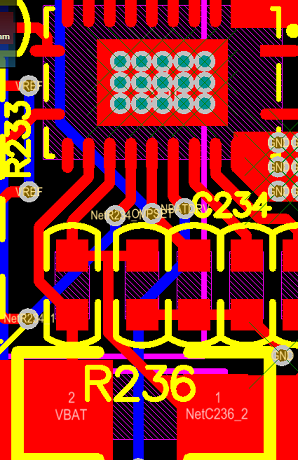In my BQ24133 application, the CELL PIN is floating, Rsr = 10 mohm, Viset = 1.75V, the charge current should be 875mA. However, when I use a 10V-2A power supply to charge a battery(voltage between 7V and 8.2V), the current showed is far less than 875mA(685mA or 710mA or so for different batteries with voltage between 7V and 8.2V). Is this normal?
I think BQ24133 works in CC charge stage when the battery voltage is between 7V and 8.2V, and the charge current should be a relatively steady value.
Additionally, from the specificatios, charge current regulation accuracy is as follows:
Should I think the charge current for my case is between 875mA*(1-25%)=656.25mA and 875mA*(1+25%)=1093.75mA? If so, the chip has a poor charge current accuracy.



